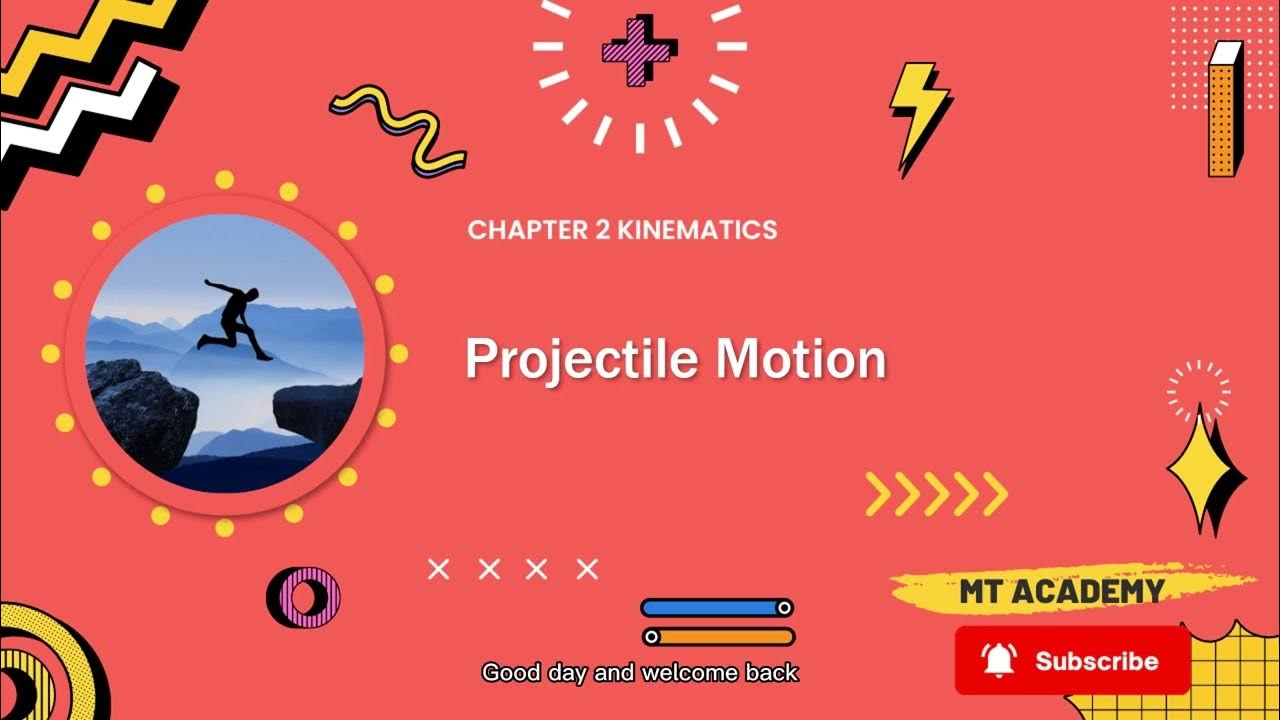Hewitt-Drew-it! PHYSICS 14.Ball Toss
Summary
TLDRIn this video, Phil Physiker demonstrates the physics of a ball's trajectory, explaining the principles of velocity, gravity, and air resistance. As the ball moves through various points in its path, the changing vertical and horizontal components of velocity are highlighted. The video distinguishes between velocity and force vectors, emphasizing that they don't combine. The discussion also touches on acceleration, noting its proportional relationship with force. The conclusion challenges viewers to consider the ball's acceleration at the top of its path, prompting further thought about the connection between force, velocity, and acceleration.
Takeaways
- 😀 The ball is tossed across the field, and its movement is analyzed at five positions: A, B, C, D, and E.
- 😀 At position A, the initial velocity of the ball is shown as a vector, with no additional force acting once it leaves Phil's hand.
- 😀 Gravity and air resistance are the only forces acting on the ball after it leaves Phil’s hand, but air resistance is neglected in this ideal case.
- 😀 The vertical component of velocity decreases as the ball rises, while the horizontal component remains unchanged.
- 😀 At the top of the path (position C), the vertical component of velocity becomes zero, leaving only the horizontal component.
- 😀 The ball’s speed at the top of its path is equal to the initial horizontal component of velocity, regardless of the toss angle.
- 😀 At positions D and E, the ball's motion mirrors the earlier stages, with the horizontal component unchanged but the vertical component now directed downward.
- 😀 The path of the ball forms a parabola in the ideal case, with the horizontal motion being consistent and the vertical motion governed by gravity.
- 😀 In the presence of air resistance, the ball’s horizontal motion decreases due to air resistance, and it doesn't travel as far horizontally or reach the same height vertically.
- 😀 Force vectors and velocity vectors are distinct and should not be combined in the same diagram, as they represent different physical concepts (force vs. velocity).
Q & A
What happens to the ball after Phil tosses it across the field?
-After Phil tosses the ball, no further throwing force acts on it. The only forces acting on the ball are gravity and air resistance, though air resistance is neglected in the ideal case.
How do the vertical and horizontal components of the ball's velocity change as it moves?
-The vertical component of the ball's velocity decreases as it moves upward due to gravity, while the horizontal component remains unchanged, assuming no air resistance.
What is special about the velocity at the top of the ball's path?
-At the top of the ball's path, the vertical component of velocity becomes zero, leaving only the horizontal component, which remains unchanged from the initial velocity.
Why is the velocity at the top of the path the same as the initial horizontal component?
-The horizontal component of velocity remains constant throughout the ball's flight because no horizontal forces act on the ball, assuming air resistance is neglected.
What happens to the ball's path in the presence of air resistance?
-With air resistance, the ball's path is no longer parabolic. The horizontal component of velocity decreases over time, causing the ball to travel a shorter distance, and the vertical component is affected, limiting the ball's height.
Why can we not combine velocity vectors with force vectors?
-Velocity vectors and force vectors cannot be combined because they represent different physical quantities: velocity is a measure of speed and direction, while force represents an interaction that causes acceleration. Combining them doesn't have any meaningful physics interpretation.
What do the red vectors represent in the diagram?
-The red vectors represent the downward force of gravity acting on the ball at all points along its path.
What happens to the force of gravity as the ball moves along its path?
-The force of gravity remains constant throughout the ball's flight, as gravity doesn't change with the ball's position or velocity.
How are force and acceleration related?
-Force and acceleration are directly proportional, according to Newton's second law. The greater the force applied to an object, the greater the acceleration it will experience.
What is the acceleration vector like at the top of the ball's path?
-At the top of the ball's path, the acceleration vector is still pointing downward due to gravity, even though the vertical velocity is zero. The acceleration remains constant throughout the ball's flight.
Outlines

This section is available to paid users only. Please upgrade to access this part.
Upgrade NowMindmap

This section is available to paid users only. Please upgrade to access this part.
Upgrade NowKeywords

This section is available to paid users only. Please upgrade to access this part.
Upgrade NowHighlights

This section is available to paid users only. Please upgrade to access this part.
Upgrade NowTranscripts

This section is available to paid users only. Please upgrade to access this part.
Upgrade NowBrowse More Related Video

Kinematics: Projectile motion | STPM Physics

GCSE Physics - Terminal Velocity

Gerak Parabola Fisika Kelas 10 - materi fisika SMA - Gerak parabola

Dynamics - Lesson 7: Projectile Motion Introduction Example

Two Dimensional Motion (1 of 4) An Explanation

الدرس 12 📌 حركة القديفة وما يتعلق بيها سنة اولى ثانوي علمي 📝📝📝
5.0 / 5 (0 votes)